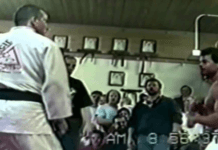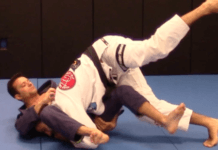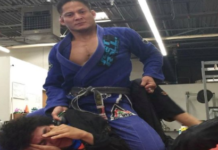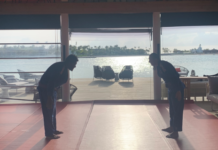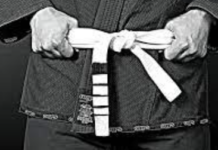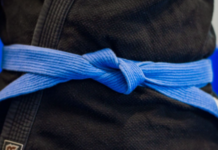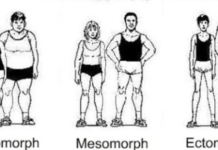BJJ compared to some other sports like judo or MMA can be considered a bit less injurious. However, that doesn’t mean anything bad can’t happen while practicing Brazilian Jiu Jitsu. You can still experience some damage, both in daily training and in tournaments. And usually, when we start the topic of such injuries, we first think of back injuries or cauliflower ears. However, these are not the only bad things that can happen while practicing jiu jitsu. Unfortunately, during training, you can also damage your ribs. Therefore, below, more about rib injuries in BJJ, which are the most common, how to deal with them, and how to prevent such.
Common rib injuries in BJJ
Seeing a term rib injuries, it may seem like it is only about one type of damage. Unfortunately, this is not the case, ribs can be injured in many ways. Below are descriptions of individual damage. Starting from the least severe to the worst things that can happen when it comes to the ribs.
Bruised ribs
Bruised ribs are the mildest of the injuries presented here. Rib contusion manifests itself in the form of pain when touched or when you are inhaling. As well as bruising of the injury site. Bruised ribs can also cause shortness of breath and mobility problems. Even though bruised ribs are the slightest injury to a rib, they can still be painful. Fortunately, they heal a little faster than other rib injuries. Still, such an injury requires a bit of a break from BJJ to fully heal. The treatment of bruised ribs can be done at home using gel or ointment for bruises.
Cracked ribs
Cracked ribs are an injury more serious than bruised ribs, but less severe than a full fracture. It occurs through trauma to the rib cage that results in an incomplete fracture. With such ribs, the risk of organ damage is much lower compared to a full fracture. However, cracked ribs will still cause pain when inhaling deeply and moving the torso. A cracked rib will be extremely fragile when pressed and will take several months to fully heal.
Broken ribs
Broken ribs are perhaps the most serious type of rib trauma that can occur in a BJJ. Most often, rib fractures are a consequence of a direct impact to the chest (trauma), less often they appear as fatigue fractures, i.e. as a result of repeated microtraumas. Rib fractures cause local pain in the chest, which is aggravated by twisting the torso, lifting heavy objects, coughing, sneezing, and inhaling deeply. Pain is usually localized in a specific place on the chest. Local swelling and bruising may appear in this or its vicinity. Pain caused by a rib fracture may affect the way of breathing, i.e. it may cause shallow breathing. This type of injury requires immediate medical attention and will likely take months to fully heal.
In most cases, one or two adjacent ribs are broken in one place. Such fractures are stable, which means the ribs are broken, but the bone fragments do not move and do not damage other structures of the chest. A much more dangerous situation is a fracture of many ribs in many places within one bone. Then, due to the unstable nature of these fractures, the mobility of the chest may be disturbed, and therefore breathing may be disturbed. A broken rib with displacement may injure the pleura, i.e. the membrane covering the lungs, and cause a pneumothorax – air from the lungs passes beyond the respiratory tract, remains in the chest (in the pleural cavity), and compresses the lungs. Unfortunately, rib fractures are relatively common. It is estimated that 10% of all skeletal bone fractures are rib fractures.
How to distinguish rib injuries from each other?
If the ribs are bruised or broken, there will be a pain at the point of impact. A bruise may appear the next day. The pain in the ribs when breathing, especially when inhaling, may increase. This is due to the expansion of the lungs, intercostal muscles, and at the same time expansion of the chest and ribs. In some cases of fracture, the mobility of the chest is limited or the mobility of the ribs is pathological. Restricted mobility can lead to inadequate ventilation of the lungs and thus to a feeling of breathlessness. A broken or bruised rib hurts when touched during palpation or self-examination. Pain in the ribs on the right or left side may also worsen at night, when turning over to the injured side, or when yawning. If several ribs are severely broken, the skin may feel sharp or uneven rib edges.
Symptoms of rib contusions and rib fractures will be similar. Especially if you do not feel any structural changes in the ribs visually or palpating. Radiological examination is an important diagnostic test to determine whether the ribs are bruised or broken. A chest X-ray or CT scan may be used to make a diagnosis. Sometimes, however, it is difficult to see the discontinuity of the rib, therefore the radiological examination should be combined with the palpation examination. After a few days, diagnostic imaging can be repeated. This will confirm the diagnosis.
Treating BJJ rib injuries
The way of treatment of rib injury will depend on the kind of damage. However, regardless of the type of injury, the principle is the same. If you have damaged a rib you must take a break and rest until it heals. Generally, broken ribs will require around six weeks of complete rest to fully heal. Icing and pain medication can help deal with any pain as the injury heals. In no case do not try to roll while using painkillers or some other medicines. That’s only going to aggravate the problem. However, there are other things you can do that will help you get back to training faster. These are mainly exercise to help bring the chest back to the state it was in before the injury.
- Intercostal muscles exercises – intercostal muscles are the muscles placed in between the ribs, which makes them quite difficult to train and strengthen. In terms of rehab from a BJJ rib injury, breathing techniques are the best exercises to work them. The principal purpose of these muscles is to extend the ribcage. The best way to give these muscles some time to exercise is by trying to make your chest almost fully expand. Just remember, if there’s still some pain you’ll probably only make things worse. However, if you can do it painlessly, then go for at least five sets of 10- 15 breaths.
- The obliques training – the oblique muscles are in charge of bending and twisting motions of the torso. They are the main protectors of the lower ribs. Any variation of crunches that goes diagonally is a great way to train obliques.
- The elusive serratus muscles – these muscles are protecting the higher ribs. Every time you stretch your arms forward, those muscles are working. To strengthen and mobilize them you’ll need to include a reaching motion. Combine it with a crunching variation and you’ll be all set. Crunches with forwarding reaches are a good example. In terms of rehab go for the weight-free option and lots of reps.
Preventing rib injuries
At BJJ, we have many types of protectors. With their help, we can protect the knees or elbows. However, when it comes to ribs, there is hardly anything like that in jiu jitsu. So the best advice would be ‘tap early, tap often.’ If you are a smaller person, you can also consider avoiding much heavier and stronger opponents. To avoid this type of injury, it is also worth taking care of your bones in general. That is, just make sure you get the right amount of calcium and vitamin D in your diet to keep your bones strong and healthy.
Check also:
- Training Jiu Jitsu can Have Life-Threatening Consequences!
- Finger Pain in BJJ and How to Prevent it
- Cauliflower Ear in Jiu-Jitsu How to Treat and Prevent it
Treatment for rib injuries
In most cases, rib injuries need 4-6 weeks of inactivity and rest in order to heal properly. So, the smartest thing that you could do in this sense is to rest and recover. Sleep long and sound, and be mindful of your diet. Don’t overstrain your ribs during this time and don’t dare to even think of going on the mats until you heal fully. In all cases, it would be a good thing for you to seek the advice of a professional in the field. This is especially the case if you feel that anything’s off – if you start coughing up green phlegm or blood, if your chest pains you a lot, if you get a fever – if anything happens to you out of the ordinary then you should seek a doctor’s advice immediately.
How to avoid rib injuries
The best thing to do if you wish to avoid rib injuries is to keep in shape. Few people realize but there are important muscles around the ribs – the intercostal muscles. They too need to be trained in order to be strong and to protect the ribs. Do proper warmups before your rolling sessions and practice your breakfalls – if you remember, the takedowns are one of the greatest causes of rib injuries in Jiu-jitsu, so if you know how to break your fall you will add a new layer of protection to your ribs.



